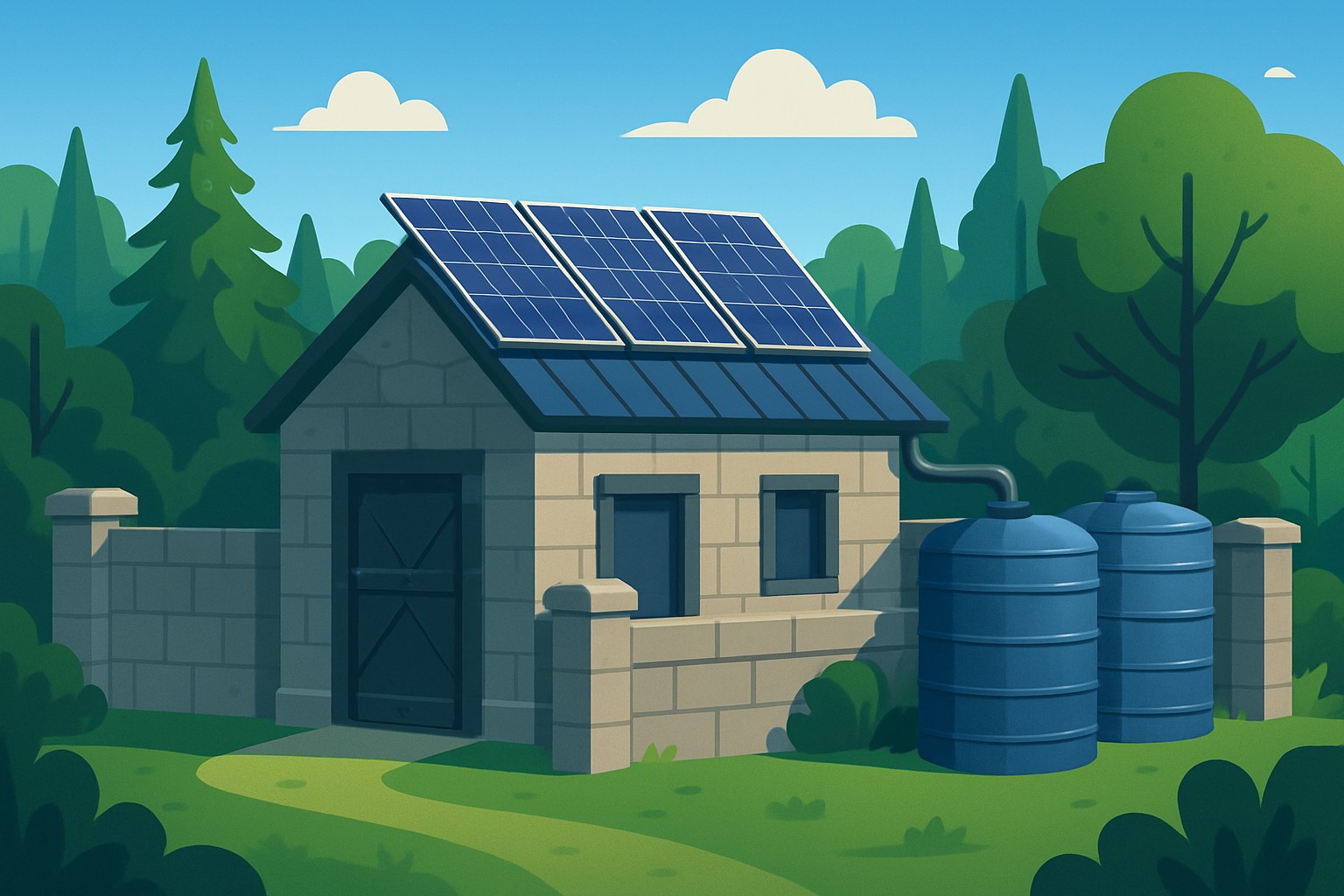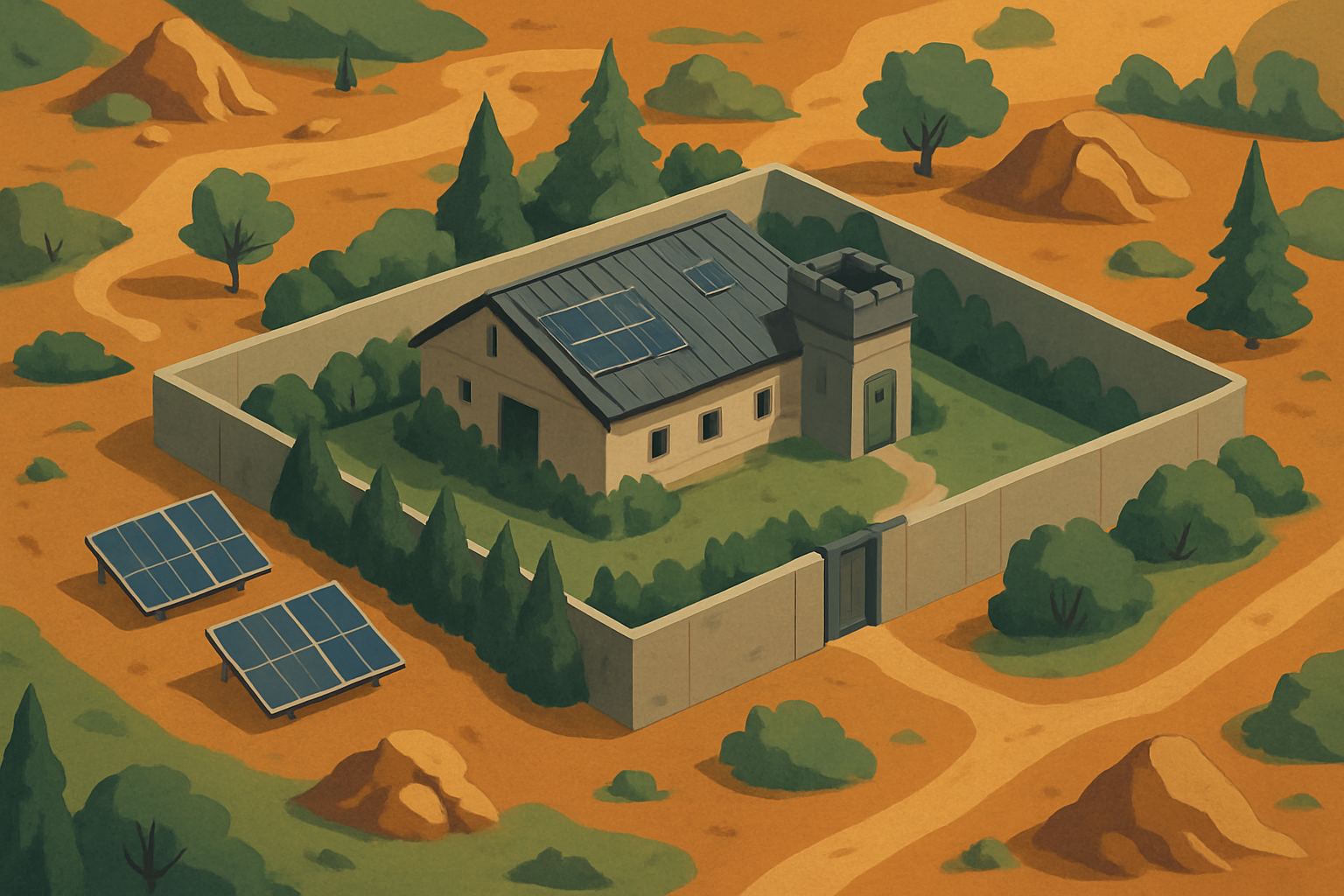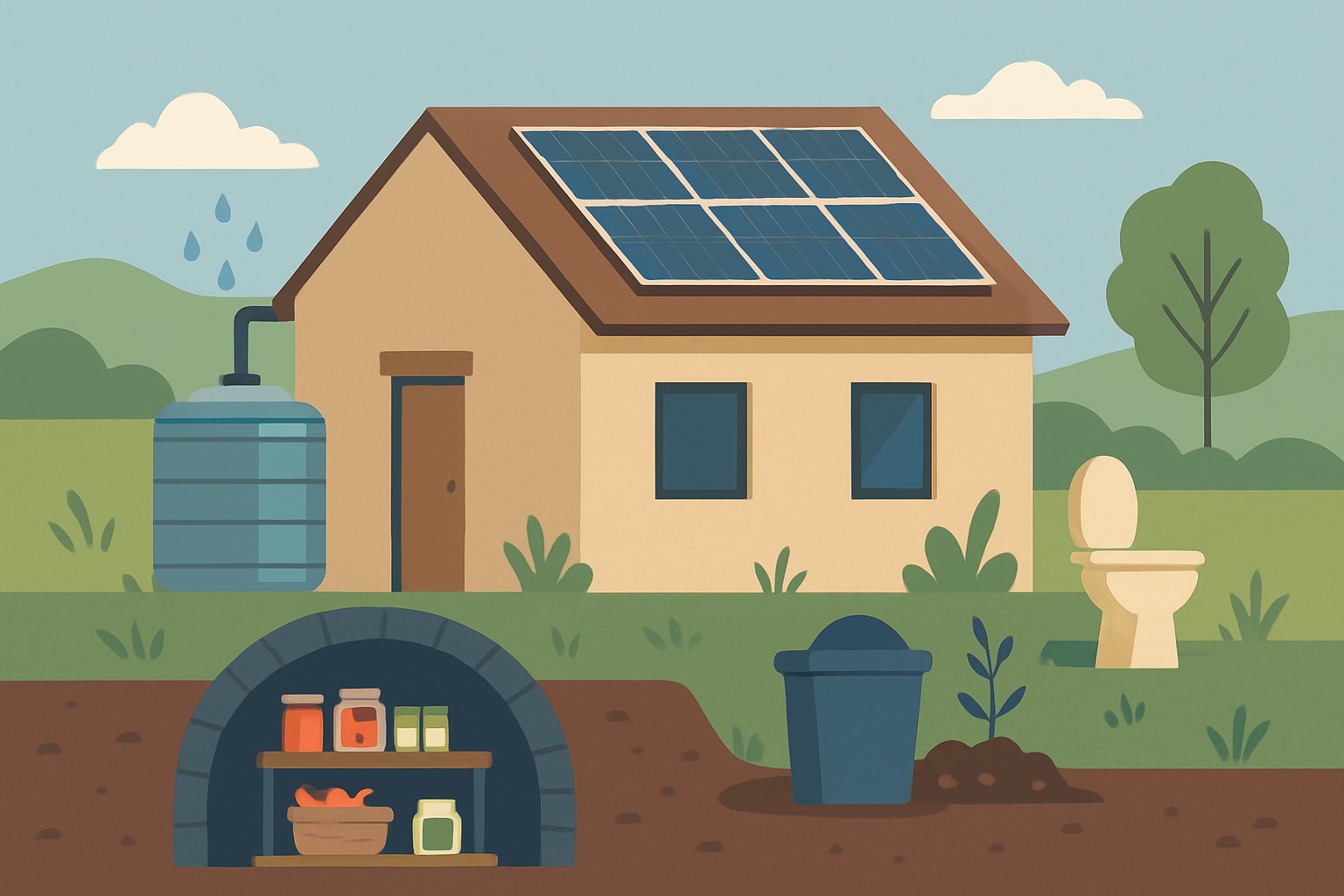
Prepper Homes - Step by Step Building for Long-Term Safety


Prepper homes are a smart and down-to-earth way to stay safe and self-reliant when life throws curveballs your way. Whether you’re facing natural disasters or social unrest or other unexpected emergencies, having a prepper home gives you the protection and resources you’ll need to ride things out.
Understanding Prepper Homes and Why They Matter (More Than You Might Think)
Prepper homes are designed with safety and sustainability at the forefront. They focus on self-sufficiency and provide a sense of security and the essential resources individuals need to weather disruptions.
- They come packed with top-notch security measures designed to keep unwanted guests out and protect everyone inside.
- Sustainability isn’t just a buzzword here. It takes center stage with systems focused on renewable energy and smart resource conservation.
- Stashing plenty of water and food is the cornerstone for getting through tough long-term emergencies.
- Achieving energy independence with solar panels, wind turbines or trusty generators means you’re not stuck waiting on the grid.
- Communication is key. With emergency radios and satellite phones, staying connected when things get rough becomes much easier.
Planning Your Prepper Home Essential Things to Consider Before You Start Building
Careful planning is absolutely essential before you even think about breaking ground. Picking the right spot and watching for potential pitfalls like floods or earthquakes are important. You also need to set a budget that won’t make you wince later and decide exactly what you want your prepper home to achieve. All of these will shape how your safe haven looks and works.
Take a good hard look at geographic risks like natural disasters and local crime rates. These key guides will help you pick the safest spot.
Figure out whether an above-ground, underground or hybrid setup fits your environment and safety needs best because it’s all about what works well with your surroundings.
Set a budget that’s grounded in reality by focusing on must-have safety features and the kind of self-sufficiency that won’t leave you stranded.
Choose durable and sustainable materials that match your location’s quirks and overall goals. Think long-term instead of quick fixes.
Make sure you’re on the right side of the law by researching and securing all necessary building permits and zoning approvals before breaking ground.

An aerial shot showing a well-planned prepper home in a strategic location, featuring natural defenses and renewable energy systems.
Step 1 Building a Structure That Strikes the Right Balance Between Safety and Everyday Practicality
Careful architectural planning is the cornerstone of any good prepper home. You’ll want to focus on sturdy construction to ensure it stands the test of time. Secure entrances that keep out uninvited guests and clever use of space include important survival areas like safe rooms and storage.
- Walls reinforced with concrete or steel usually stand their ground well against both physical force and whatever Mother Nature throws their way.
- Entrances don’t just rely on a single lock. They’re fortified with multiple layers of locks and sturdy reinforced doors, giving you that extra peace of mind.
- Windows crafted to resist blasts or shattering not only boost protection but also let natural light in.
- Safe rooms offer a cozy little nook for refuge and are often decked out with communication tools so you’re never truly cut off.
- Ventilation systems are cleverly designed to keep the air fresh and breathable while maintaining the overall security of the space, which is no small feat.
Step 2 Picking Out Sustainable and Resilient Materials for Building Because Your Project Deserves the Best Shot at Lasting
Choosing the right materials is all about striking the right balance between durability and cost, environmental impact and availability. Concrete, steel and insulated earth blocks usually stand the test of time with solid long-term resilience. The greener alternatives often help shrink environmental footprints and bring better insulation to the table.
| Material | Durability | Cost | Ease of Sourcing | Resistance to Natural Disasters |
|---|---|---|---|---|
| Concrete | Generally strong and reliable | Moderate | Usually easy to come by | Holds up impressively well against fire, wind, and floods |
| Steel | Tough as nails and long-lasting | On the pricey side | Mostly found in urban areas | Packs a serious punch when it comes to impact and fire resistance |
| Earth Blocks | Decently durable, with some quirks | Budget-friendly | Varies quite a bit by region | Great thermal mass but watch out—can be vulnerable to water damage if not sealed properly |
| Insulated Panels | Solid durability | Mid-range | Getting easier to find every day | Offers nice insulation along with respectable weather resistance |
| Wood (treated) | Fairly sturdy when treated right | Low to moderate | Easy to find in most places | Does its best to stand up to fire and pests, but only if properly treated |
Step 3 Bringing Together Key Systems to Actually Nail Self-Sufficiency
A well-prepared home quietly champions long-term self-sufficiency by bringing together all the essential systems for collecting water and generating energy, storing food and managing waste.
- Rainwater harvesting systems gather and filter water, making sure your household needs are covered even when the skies aren’t cooperating.
- Solar panels teamed up with battery banks keep the lights on and gadgets running smoothly, especially when you’re off the grid and can’t rely on the usual power sources.
- A root cellar or a cleverly organized pantry works wonders in keeping both perishable and non-perishable foods fresh and ready to go, like a trusty sidekick in your food storage game.
- Composting toilets not only cut down on water usage but also turn waste into useful fertilizer, which is a win-win.

Diagram showing integrated self-sufficient systems in a prepper home for water, energy, food storage, and waste management.
Step 4 Boosting Security and Getting Emergency Readiness Just Right
Strong security measures and carefully thought-out emergency protocols are absolutely essential when it comes to keeping your family and property safe.
- Set up surveillance cameras you can monitor from afar.
- Use alarm systems with motion sensors, glass break detectors and loud sirens that mean business when sounding the alert.
- Create safe rooms stocked with emergency supplies and communication tools.
- Keep emergency radios and satellite phones within arm’s reach to stay connected.
- Plan and keep several escape routes ready.
Step 5 Keeping Things Safe and Sound Over the Long Haul
Building a prepper home is just the first step in what feels like an ongoing adventure. Keeping it functional and safe over time means rolling up your sleeves for regular upkeep. Routine inspections and servicing those trusty systems are important. Updating supplies and tweaking things to fit your changing needs also play a part.
Keep a regular eye on structural parts like walls, roof and foundation for signs of damage or wear. It is like giving your home a quick health check to avoid nasty surprises down the line.
Maintain your water purification, collection and energy systems so they run smoothly when you need them most because good upkeep saves headaches later.
Don’t forget to rotate your stored food and water supplies now and then to keep everything fresh and ready to use. No one wants a pantry full of expired stuff lurking around.
Test alarms, communication devices and backup power sources often since it’s the best way to double-check they’ll actually do their job when you’re counting on them.
Typical Challenges and Practical Solutions When Building a Prepper Home That You will Actually Appreciate
Building prepper homes often comes with its fair share of headaches, like navigating tricky zoning laws and trying to keep costs from spiraling out of control.
- Getting zoning permits early is a real lifesaver to dodge those pesky legal delays. I have found that touching base with local authorities and picking the brains of seasoned professionals usually smooths the path nicely.
- Exploring different financing options—whether loans, grants, or personal savings—can take the edge off tight budgets. It’s about finding what fits your situation best.
- Building solid relationships with local material suppliers often pays off by cutting costs and making sure you don’t get caught out when supplies run low.
- Zeroing in on must-have features strikes the right balance between cost and functionality. This approach often keeps surprise expenses at bay, which is always a win in my book.





